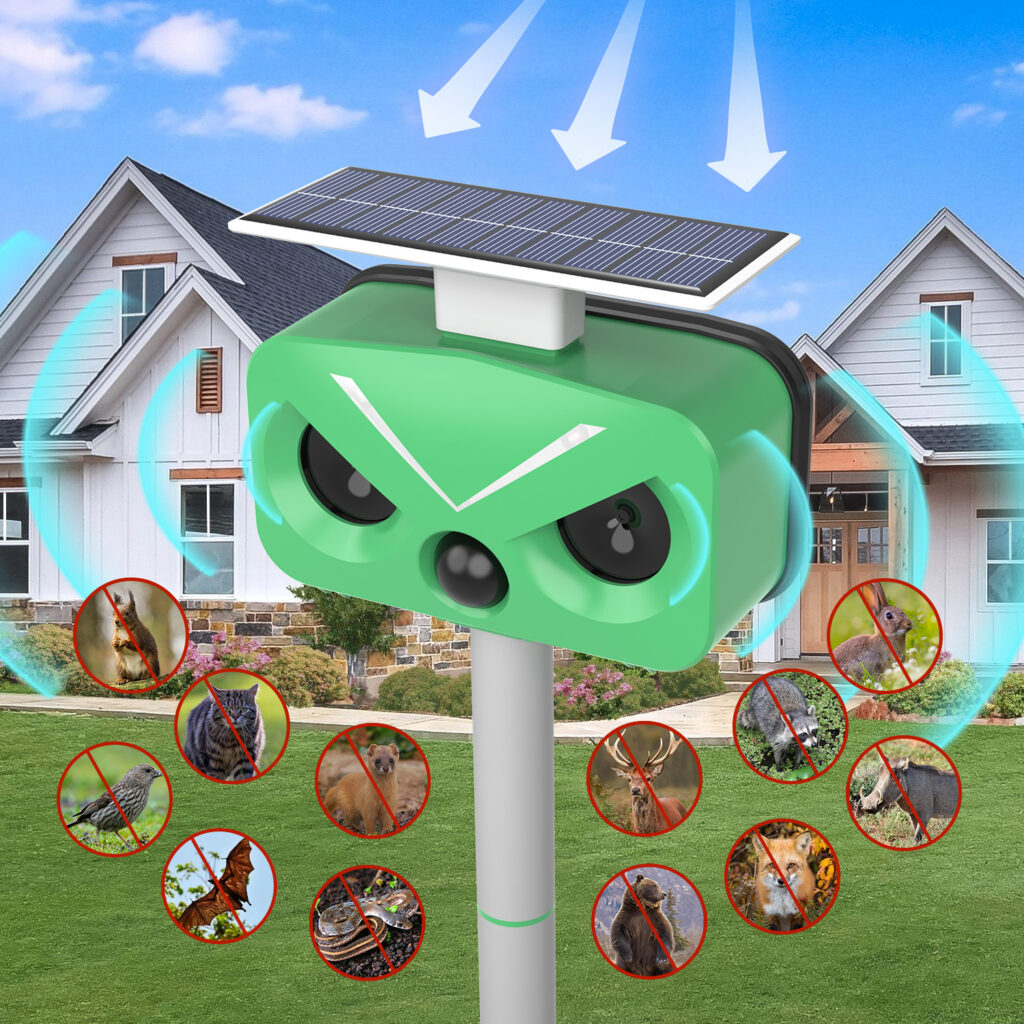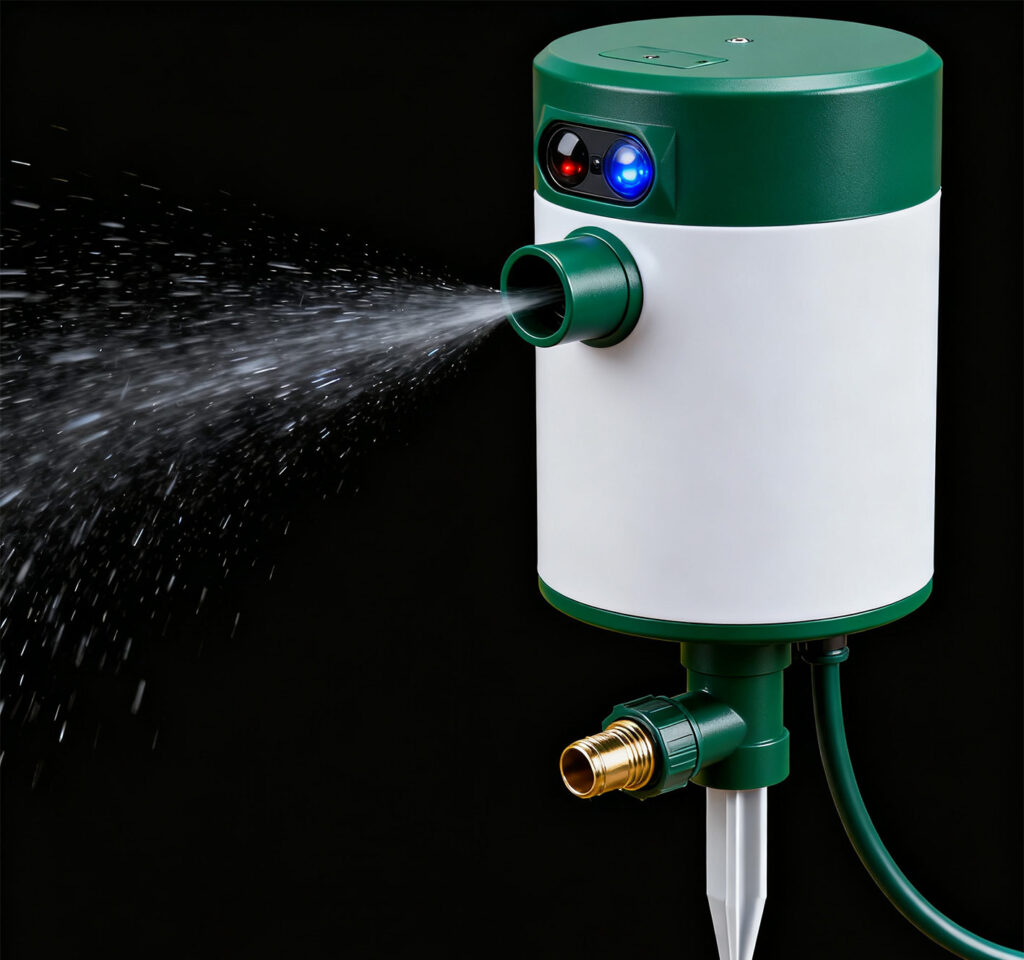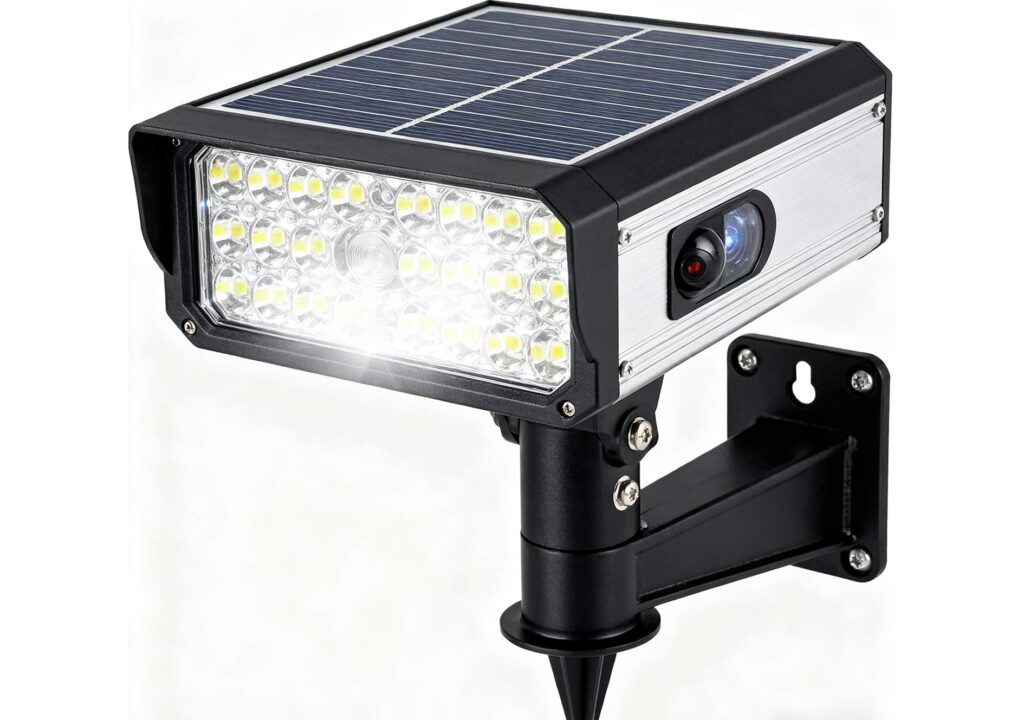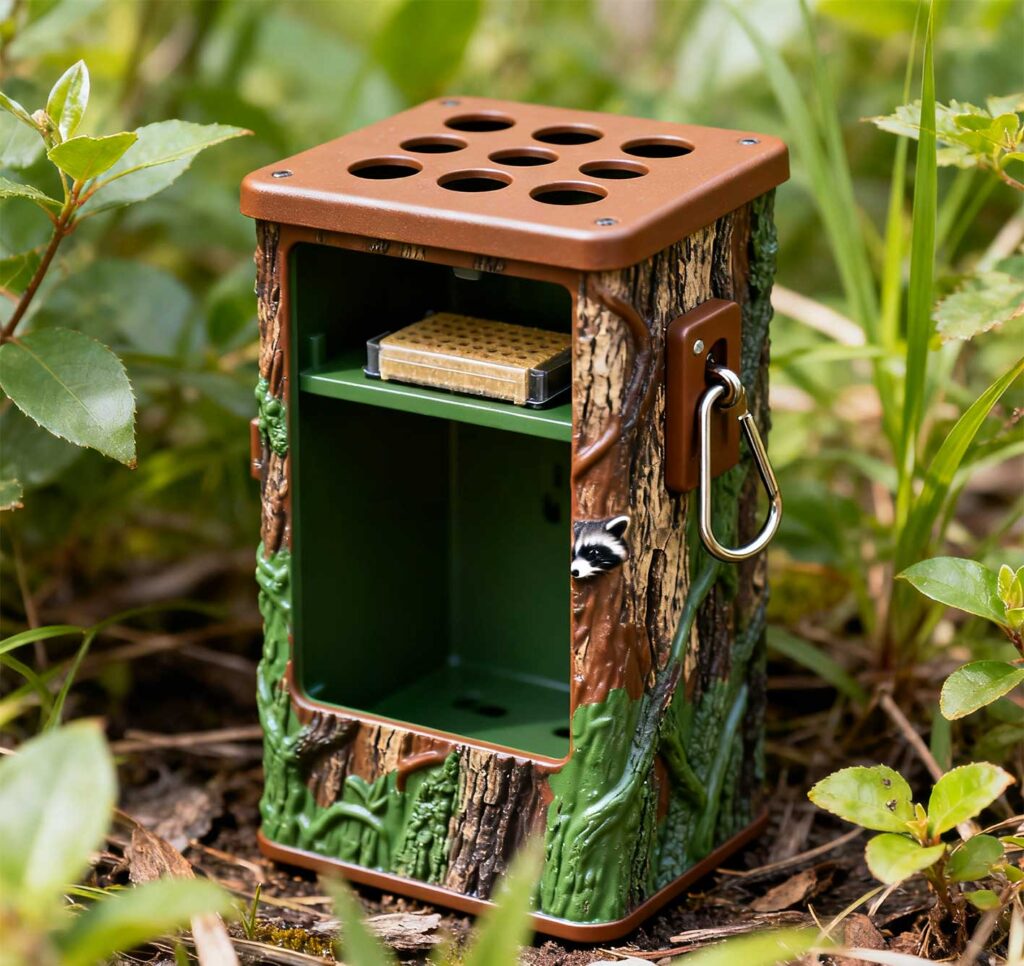Author: Robert Luo
In urban-rural fringe areas and suburbs, raccoons have become common “yard invaders.” These seemingly cute creatures actually pose numerous hidden dangers—overturning trash cans to pollute the environment, gnawing on plant roots to destroy gardens, and even spreading rabies and other pathogens, causing significant disruption to household life. Traditional deterrent methods (such as manual removal or placing pungent odors) offer only temporary relief and require considerable effort. In contrast, professional raccoon deterrents leverage scientific principles to achieve long-lasting, safe repellent effects, making them the preferred choice for an increasing number of households. This article provides a comprehensive analysis of raccoon deterrents, helping you make informed purchasing decisions and use them effectively to bid farewell to raccoon troubles once and for all.

1. Sanitation Contamination and Disease Transmission
Raccoons love rummaging through trash bins. Scattered kitchen waste attracts insects, emits foul odors, and severely compromises yard hygiene. More dangerously, raccoons are potential carriers of rabies. Their feces and urine may also contain parasites like Toxoplasma gondii. Contact with humans or pets can easily trigger health risks.
2. Property Damage and Structural Destruction
Raccoons’ sharp claws and teeth inflict multiple damages on household structures: gnawing wooden fences, disrupting lawn root systems, climbing roofs to loosen tiles, and even chewing through electrical wires—creating serious safety hazards. In vegetable and fruit gardens, raccoons can devour crops on a large scale, causing substantial losses for farmers.
3. Noise Disturbance and Living Disruption
Nighttime marks the peak activity period for raccoons. The sounds of them rummaging through trash and climbing objects can severely disrupt residents’ sleep. If raccoons build nests under eaves or in garage corners, they may cause persistent noise disturbances, disrupting normal daily rhythms.
4. Threat to Pet Safety
Raccoons exhibit aggressive tendencies. If household pets (cats, dogs) encounter a raccoon, fights may erupt, potentially injuring the pet. Additionally, pathogens carried by raccoons can be indirectly transmitted to humans through contact with infected pets.
Raccoon repellent devices utilize methods such as simulating predator signals or releasing irritants to exploit raccoons’ timid and sensitive nature for deterrence. Currently, the mainstream types are categorized into the following four, each suited for specific scenarios:
1. Ultrasonic Raccoon Repellent (Most Popular)
Working Principle: Emits ultrasonic waves at 20-65KHz. This frequency strongly irritates raccoons’ auditory systems, inducing agitation and fear, prompting them to flee voluntarily. It has no effect on humans or pets like cats and dogs (whose hearing ranges do not cover this high-frequency band).
Core Advantages: Silent operation, easy installation, long battery life (often solar-powered), and wide coverage (single unit covers 100-300 sq m).
Ideal for: Open areas like yards, lawns, gardens, and trash bin surroundings—especially suitable for noise-sensitive households.

2. Water Spray Raccoon Repeller (Top Choice for Physical Deterrence)
How It Works: Equipped with an infrared sensor, the device immediately sprays a high-pressure water jet accompanied by a mild noise when raccoons enter the detection range (5-10 meters). This physical stimulus repels raccoons without causing harm.
Core Advantages: Immediate deterrence effect, dual-purpose irrigation functionality, suitable for households with elderly or children.
Recommended Scenarios: Balconies, vegetable gardens, pool perimeters, trash bin storage areas. Requires installation near water source.

3. High-Intensity Light Raccoon Repeller (Night Use Only)
Working Principle: Exploits raccoons’ aversion to bright light. Equipped with an infrared sensor, it automatically activates a strobe light (some models include ultrasonic waves) upon detecting nocturnal raccoon activity. This stimulates the raccoon’s visual system, causing it to flee rapidly.
Core Advantages: Highly effective at night, low energy consumption, excellent waterproofing, ideal for areas with frequent nocturnal raccoon activity.
Suitable Locations: Roofs, perimeter walls, garden corners, and other nighttime entry points.

4. Scent-Based Raccoon Repellent (Supplementary Deterrent Tool)
Operating Principle: Releases scent extracts from raccoon predators (e.g., foxes, owls) or pungent odors raccoons dislike (e.g., mint, garlic essential oil) to simulate a threatening environment, compelling raccoons to retreat.
Core Advantages: No power supply required, highly concealable, can be used in conjunction with other repellent types to enhance deterrence effectiveness.
Suitable Scenarios: Closets, garage corners, storage rooms, and other enclosed or semi-enclosed spaces. Requires periodic replacement of scent cartridges.

1. Prioritize Coverage Area to Match Your Usage Scenario
When selecting a device, choose one with coverage appropriate for your yard size: – Small yards (50-100㎡): Opt for a basic model covering up to 100㎡. – Medium to large yards (100-300㎡): Consider an enhanced model covering 200-300㎡, or use multiple units to avoid repellent dead zones.
2. Safety is paramount, especially for households with pets/children
Select products explicitly labeled “harmless to humans and animals.” For ultrasonic or strobe devices, verify frequencies/brightness levels fall within safe ranges.
Avoid high-pressure direct-stream spray models; prioritize diffused-flow water sprayers to prevent accidental injury to pets or children.
Avoid toxic ingredients in scent-based repellents; opt for plant-based essential oil formulations.
3. Power Source: Solar vs. Plug-in – Choose Based on Needs
Solar models: No wiring required, flexible installation, ideal for open outdoor areas. Check solar panel conversion rate (≥18% recommended) and battery capacity (≥3 days of cloudy weather endurance).
Plug-in models: Stable power supply, suitable for areas near outlets (e.g., balconies, garage entrances). Ensure waterproof rating (IP65 or higher rating).
4. Installation Ease & Durability
Prioritize models requiring no drilling, with wall-mounting or ground-plug options to save installation time.
For outdoor use, check waterproof rating (IP65 or higher) and materials (weather-resistant ABS engineering plastic, stainless steel, etc.) to withstand rain, snow, and intense sunlight.
5. Feature Upgrades: Sensitivity Adjustment & Mode Selection
Adjustable sensitivity enhances practicality by accurately distinguishing raccoons from other triggers (preventing false alarms).
Premium models may offer multi-mode switching (e.g., daytime ultrasonic + nighttime strobe) or scheduling functions to adapt to varying deterrence needs throughout the day.
1. Precise Placement to Eliminate Blind Spots
Installation Height: For ultrasonic and strobe light devices, mount 1-1.5 meters above ground level, facing areas frequented by raccoons (e.g., trash bins, fence gaps).
Water-jet devices should target entry paths, ensuring coverage of critical zones (e.g., garden entrances, trash bin peripheries).
Clear Line of Sight: Keep the device’s front unobstructed to ensure unimpeded transmission of ultrasonic waves, light beams, or water jets.
2. Rotate positions regularly to prevent adaptation
Raccoons adapt quickly. Using the same repellent in one spot long-term may cause them to ignore the stimulus. Rotate device locations or modes every 1-2 weeks to maintain effectiveness.
3. Combine devices to enhance deterrence efficiency
Single-type repellents may have limitations. Consider using combinations: e.g., ultrasonic + water spray for daytime long-term deterrence and nighttime precise triggering; or scent-based + bright light for enclosed spaces with scent assistance and open areas with enhanced bright light effects.
4. Implement auxiliary measures to reduce raccoon attraction
Promptly remove yard debris; use secure, lidded trash bins to prevent food residue attracting raccoons.
Trim yard shrubs and weeds to minimize hiding spots.
Avoid storing pet food outdoors; bring pet bowls indoors at night.
1. Do raccoon repellents affect pets?
Reputable products pose no harm to common pets like cats and dogs: ultrasonic frequencies exceed their hearing range, bright lights won’t damage their eyes, water spray pressure is gentle, and scent formulas undergo safety testing. For unique pets like hamsters or birds, choose models with adjustable ultrasonic power.
2. How long until repellent effects are visible?
Noticeable results typically appear within 1-3 days: Raccoons flee immediately upon first exposure to the stimulus. After 2-3 repetitions, they develop a conditioned response, reducing intrusion frequency. If multiple raccoons inhabit the yard, complete deterrence may take approximately one week.
3. Can it function during inclement weather?
Products with an IP65 waterproof rating or higher withstand heavy rain, snowstorms, and high temperatures. Solar-powered models rely on built-in batteries during cloudy or rainy conditions, eliminating downtime concerns. In cold winter regions, choose models with cold-resistant materials to prevent battery performance degradation.
4. What should I do if raccoons keep coming back?
First, check if the device is functioning properly (e.g., battery level, sensor sensitivity). Adjust the installation location or add more devices. Next, inspect your yard for any uneaten food sources. Combine this with additional measures (like reinforcing trash cans or sealing gaps in fences) for a comprehensive solution.
While raccoon infestations can be troublesome, choosing the right repellent device ensures efficient, safe, and long-lasting results. Whether ultrasonic, water spray, or strobe light models, precise selection based on your yard’s layout and household needs—coupled with proper usage techniques—will eliminate raccoon-related health risks, property damage, and daily disruptions. In 2025, consider equipping your home with a quality raccoon repellent to scientifically safeguard your living environment’s cleanliness and tranquility!

Hello, I am the webmaster of lecintech.com, Robert Luo, you can call me Robert. I have years of experience in the pest control business. We specialize in designing and manufacturing ultrasonic pest repellers, ultrasonic mosquito repellers, ultrasonic rodent repellers, solar powered animal repellers, pest traps, wearable pest repellers and more.